Process of hand-weaving

One of India’s favorite natural fibers, Cotton production is the second highest in India. The cotton produced is created for domestic as well as foreign use, with admiration from all over the world for the fabric’s softness. Over the years, excessive use of pesticides has pushed farmers into organic farming, growing organic cotton crops used all over India in a slow and sustainable fashion. Although the variety of cotton grown in India decreased from an outstanding 500 types to only 20 different types today, the agricultural sector has dramatically benefitted by producing limited varieties in an ethical and eco-friendly manner.

When interlocked fibers are put together in a long stretch, yarn is created. The principle length of cotton is a determining factor of the thickness of the yarn spun, which is also known as the “yarn count.” The unit used as a measure for the length of cotton yarn is known as a ‘hank,’ which is 840 yards. Handloom production significantly uses hank yarn to create fabric, with a thick count of 2’s to a fine count of 120’s.
Spinning

The result of spinning is yarn, created with textile fibers and filaments. Although people have practiced spinning by hand, the process has developed over time that involves using machinery to make it easier. Depending on the type of yarn, machines are devised to serve different purposes. For a handloom, yarn sourced is either hand-spun or mill-spun yarn, created using standard natural fibers such as wool, silk, and cotton.
Hand Spinning

This process is a delicate skill that converts cotton fiber into yarn. The way it is carried out will decide the end length and thickness of the yarn. When handspun, yarn can be produced in two ways. Cotton fiber to the yarn by hand or cotton to sliver with an initial machine use and finished off with hand spinning. This task is incredibly demanding, which is why today, a coastal belt in Andhra Pradesh is the only place across India that practices hand spinning.
Azo-free Dyeing

Azo-free dyeing for textiles is a process that eliminates the use of azo dyes, which are known to release harmful substances called aromatic amines. By opting for azo-free dyes, we prioritize the safety and well-being of both our consumers and the environment. These dyes are carefully selected to ensure compliance with strict regulations and standards, guaranteeing that our textiles are free from potentially hazardous chemicals. Azo-free dyeing not only promotes sustainability but also provides peace of mind, knowing that our products are produced with the highest level of safety and eco-consciousness in mind.
Natural Dyeing
A process that various sustainable fashion brands have adopted, natural dyeing involves pigments from nature. These include vegetable dyes and plant dyes like beets and pomegranates that produce colors without artificial chemicals. These dyes are some of the safest and healthiest practices that promote the welfare of the environment, artisan, and wearer. Some of India’s most famous natural dyes today include Indigo and Madder that create vibrant stains. Natural dyes also use mordants that help fix dyes onto the fabric. Due to the nature of dyes extracted from a plant source, some colors eventually fade under excessive sunlight. However, many artisans argue that the natural fading is the very thing that adds a humane charm to the garments.
Indigo Dyeing

Indigo dyeing is perhaps one of the most loved dyes across the world, adored for the stunning blue color it leaves as well as its eco-friendly nature. Created from the plant Indigofera, the dye has no harmful chemicals or toxins. First practiced in parts of Asia, Indigo dyeing has won hearts over the world for centuries. The work that goes into dyeing with Indigo is prolonged, with a reduction step in the beginning that changes the color from blue to yellow. The dyeing works hand in hand with oxidation and an alkaline reduction that results in spring green. Over time, the color gracefully changes into a vibrant blue hue that is used by thousands of Indian designers.
Bobbin Winding

Bobbins are an integral part of wounding yarn. When in hank form, the yarn is wound around using chakras that help stabilize and allow the yarn to be converted to a linear structure. Traditionally, weaver families delegate this work to the women of the house. It is an essential step in the pre-loom procedures, establishing a length of yarn for the actual weaving.
Warping

One of the most well-known processes of hand-looming, warping, is used to create a base yarn. This extends until the length of the fabric, which is filled in between “weft” yarns to make the final fabric. The size of a warp depends on the fabric, with hundreds and thousands of individual yarns combined. The machinery used for this process is a drum built with a custom width that helps create the desired fabric. It also aids in counting the number of threats and calculating the warp’s ultimate length, serving as an imperative capital.
Street Sizing

Another pre-loom process that is an integral part of handloom, sizing, involves strengthening the fabric with the help of natural adhesives. These are created using starch and oil to lubricate the warp, stretched and laid out flat on the street. Simply an ode to the location, sizing is known as street sizing for where it is performed.
The mix is also applied using a natural brush, created with the leaf stalks of a Palmyra plant. Sizing helps maintain the stability of the fabric, reinforcing the yarn to create a strong base. Once the starch mix is applied, it is left to dry and then expelled within two to three washes. Similar to other collaborative processes of hand-loom, sizing also requires 3 to 4 people for efficient production.
Attaching Warp onto the Loom

This is a delicate process involving separate wrap threads, drawn carefully through heddles and a set of reeds, which are then tied on beams on both ends of the loom. When separated into two sections, the weft threads find space to pass between the warp, and a segmented system repeated many times creates checks and stripes.
Motifs are also created on the loom, with a dobby that helps incorporate parts of the warp yarn into the weft. Usually, women of the village undertake the activity of attaching every single yarn to another yarn placed on the warp, helping smoothing out the yarns for an uninterrupted weave.
The heddles are designed with an eye through which the yarn is drawn, whereas the reed is a comb-like structure that puts force onto the weft yarn for a tight and secure weave.
Weft Winding

The next step after attaching the warp on the loop is weft winding. When dealing with hank yarn, a small bobbin-like structure known as prin is used to weft wind it. To prepare the weft, fingertips are an ideal tool on the charka to create tension and carry out the winding. Usually done by the women of the village, they beautifully make a vibrant and rich fabric by changing colors on the weft.
Weaving

A magical rhythm between two sets of yarn, weaving involves overlapping the warp and the weft. When placed in an interlacing fashion, meters of fabric are derived as a product of the perfect mind and body coordination. The handloom used to weave achieves the process without the use of electricity, saving costs and the environment. The weaver created a unique rhythm that works with foot pedals to lift the wrap - which is timed and in sync with the throwing of the shuttle, which holds the weft.
This process is highly demanding in terms of skill and concentration. Depending on the weaver’s design and craft, one can weave up to five meters of fabric a day with passion and dedication.
After the weaving and washing process, the fabric undergoes the final step of drying under the gentle warmth of the sun. This traditional method of sun drying holds its own unique advantages. As the fabric basks in the sunlight, it absorbs the natural energy, which aids in the evaporation of moisture. The sun's rays not only facilitate quick and efficient drying but also contribute to the fabric's freshness and natural scent. Sun drying harnesses the power of nature, providing a sustainable and energy-efficient approach to drying textiles. Moreover, the sun's natural bleaching properties can help to enhance the fabric's brightness and whiteness, giving it a vibrant and rejuvenated appearance. By embracing the age-old practice of sun drying, we ensure that the fabric is not only thoroughly dried but also imbued with the revitalizing essence of nature.


